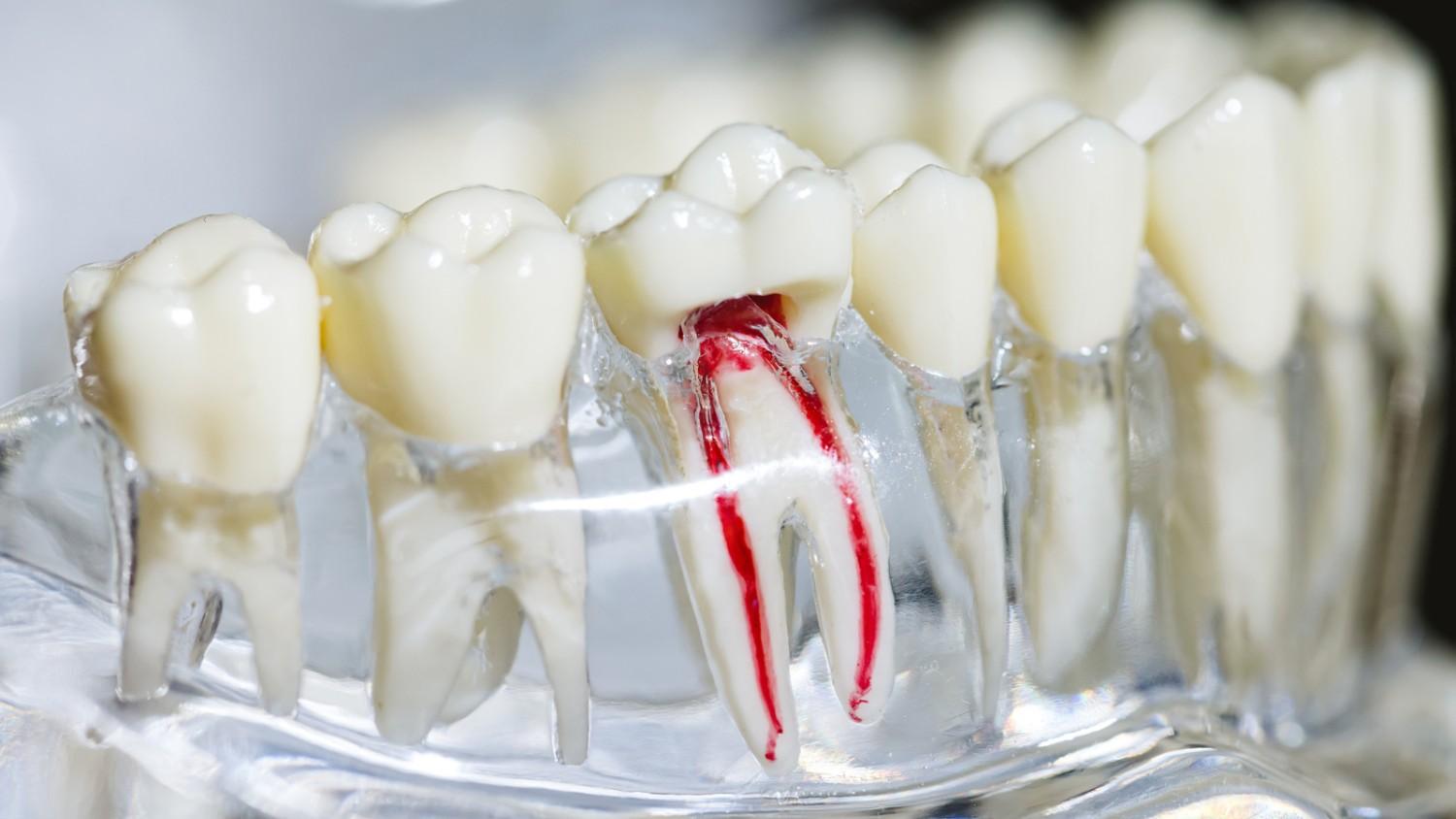Root Canal Pain After Treatment: What’s Normal and What’s Not?

You’ve just had a root canal treatment, hoping it would finally put an end to that nagging tooth pain. But now, days later, you’re still sore, maybe even more uncomfortable than expected. That mild ache you feel when biting or the lingering pressure in your jaw can be unsettling.
What’s worse is that you’re unsure whether it’s just part of the healing process or something more serious. This in-between stage often leaves people frustrated, confused, and anxious, especially when they lack clear answers.
Knowing this fact, we’ve created this guide to help you distinguish between what is normal and what is not after a root canal treatment. You’ll learn how to recognize the typical pain associated with recovery, how long it should last, and the warning signs that may suggest a complication.
By the end, you’ll have a clearer idea of what your body’s telling you and what to do next if things don’t feel right.
Table of Contents
- What Is a Root Canal Treatment?
- Normal Post-Root Canal Pain You Should Expect
- Mild to Moderate Discomfort During the First 24 to 48 Hours
- Temporary Sensitivity to Pressure and Biting
- Gradual Pain Reduction Over the First Week
- Complete Pain Resolution Within Two Weeks
- Abnormal Post-Root Canal Pain That Requires Attention
- Severe Pain That Worsens After the Initial Recovery Period
- Persistent Throbbing Pain Accompanied by Swelling
- Sharp Shooting Pain When Biting Down After One Week
- Signs of Infection, Including Fever and Pus Discharge
- What to Do When You Experience Abnormal Root Canal Pain
- Call Us for Expert Help
What Is a Root Canal Treatment?
A root canal treatment is a dental procedure that removes infected or damaged pulp from inside a tooth. When decay or injury reaches the inner nerve, it can cause severe discomfort and inflammation. Left untreated, it may lead to an abscess or even bone loss. The root canal stops the infection from spreading while saving your natural tooth.
The process starts with numbing the area. Then, a dentist carefully creates a small opening, clears out the infected pulp, disinfects the canal, and fills it with a rubber-like material.
The tooth is then sealed, either with a temporary filling or a crown, depending on the stage of the treatment. This restores function and protects the tooth from future damage.
Although the nerve is removed, your tooth and the surrounding tissues can still react. Some post-procedure discomfort is expected. Knowing what that feels like and when something feels off helps you stay ahead of any problems.
Normal Post-Root Canal Pain You Should Expect
Some discomfort is a natural part of healing after a root canal. Your tooth and the surrounding area need time to settle after the procedure. So what exactly falls within the range of normal?
Mild to Moderate Discomfort During the First 24 to 48 Hours
It’s common to experience a dull ache or soreness in the first few days after a root canal. The tooth was worked on, cleaned, and filled, which can cause the surrounding tissues to be slightly irritated. Even if the nerve is removed, the nearby ligaments and jaw area can still respond with mild ache. This kind of discomfort typically appears once the numbness wears off.
Most people describe the pain as manageable and short-lived. It can flare up when chewing or touching the tooth, but should gradually ease. Over-the-counter pain relievers typically help during this period. As long as the discomfort doesn’t increase or spread, it’s a typical sign your body is adjusting to the changes inside the tooth.
Temporary Sensitivity to Pressure and Biting
Many people notice sensitivity when biting or applying pressure to the tooth that has been treated. This isn’t unusual. The tooth has just undergone an invasive procedure, and the nearby ligaments can become inflamed or bruised. Even small contact with food or a toothbrush can trigger discomfort during the early healing period.
This type of sensitivity may also occur in teeth that have undergone microsurgical treatment in conjunction with a root canal. In both cases, your bite may need time to adjust, especially if the restoration hasn’t been finalized with a crown. Light, careful chewing can help reduce strain while you heal. The sensitivity should lessen day by day.
Gradual Pain Reduction Over the First Week
Pain should not stay at the same level for long. By the third or fourth day, you should start feeling noticeable relief. The soreness may still appear at certain times, such as during meals or when brushing, but it won’t feel as intense or constant. This gradual improvement is one of the clearest signs your recovery is on track.
Each day, the tooth should feel a little less sensitive. The area around it should also feel less tense. If the discomfort fades without new symptoms showing up, that’s a positive sign. While everyone heals at a slightly different pace, steady improvement is what you should expect through the first week.
Complete Pain Resolution Within Two Weeks
By the two-week mark, most or all of the pain should be gone. The tooth should feel strong enough for everyday use, including chewing and brushing. At this point, if you still notice sensitivity or pain, it’s worth discussing with your dentist. Residual inflammation can happen, but ongoing discomfort isn’t something to ignore.
Final restoration, like a crown, also plays a role in this timeline. Once the tooth is sealed correctly, it gets added protection and stability. That can reduce any lingering irritation. If your recovery has been smooth up to this point and no sharp or persistent pain remains, you can feel confident that the root canal has done its job.
Abnormal Post-Root Canal Pain That Requires Attention
Not all pain after a root canal is normal. Some symptoms may extend beyond the expected healing process and could indicate a complication. So, how can you tell when pain is no longer routine?
Severe Pain That Worsens After the Initial Recovery Period
If your discomfort increases instead of easing after the first few days, that’s a concern. A rising level of aches can signal that the underlying infection wasn’t fully resolved or that a canal was missed. In some cases, bacteria can remain trapped, or a small crack in the tooth may have gone unnoticed.
This type of pain often feels deeper, more persistent, and doesn’t respond well to basic medication. It may spread to your jaw, ear, or even cause discomfort while speaking. Unlike the dull ache of healing, this can feel sharp, hot, or throbbing. If things feel worse by day four or five, don’t wait to call your dentist.
Persistent Throbbing Pain Accompanied by Swelling
Swelling that develops or persists for several days can indicate a lingering infection. The throbbing sensation may feel like it pulses in sync with your heartbeat and may be accompanied by pressure in the gums or cheek. If you notice any puffiness around the jawline or near the tooth, that’s not a typical part of recovery.
Throbbing pain paired with swelling often suggests that infection is present in the soft tissues surrounding the tooth. Even if the root canal was done correctly, bacteria can sometimes spread or reactivate. If the swelling continues or worsens, or if the skin feels tight or warm, you should schedule a dental checkup as soon as possible.
Sharp Shooting Pain When Biting Down After One Week
By the end of the first week, you should be able to use the tooth with little to no pain. If biting triggers a sharp, sudden pain, it could mean something is off. That type of pain may indicate a crack in the root, a high bite, or pressure on healing tissues that haven’t yet settled. It feels different from healing pain, as it feels more sudden and intense.
This type of symptom can impact your overall root canal recovery, especially if it worsens over time or spreads to nearby teeth. A poorly adjusted bite can put pressure on the tooth, causing microtrauma. Your dentist may need to examine your crown or filling to make sure the tooth is stable and the bite is balanced.
Signs of Infection, Including Fever and Pus Discharge
Infections don’t always stay localized. If bacteria spread beyond the tooth, your body will react. A fever, chills, or a general feeling of being unwell could all suggest the infection has entered the bloodstream or is affecting deeper tissue. This is not common, but when it does happen, it requires immediate attention.
Pus near the gumline or a bad taste in your mouth can also point to infection. If you notice a small pimple-like bump near the tooth, it may be draining. This kind of discharge is never part of a normal recovery. It signals that your immune system is still fighting off bacteria, and the tooth may need retreatment or further cleaning.
What to Do When You Experience Abnormal Root Canal Pain
If the pain after your root canal doesn’t improve or starts getting worse, don’t wait it out. Persistent discomfort, swelling, or sharp pain may indicate that the treatment didn’t fully resolve the problem. The sooner you act, the easier it is to manage and prevent further complications.
Reach out to your dentist or endodontist and describe your symptoms clearly. Mention when the pain started, how intense it is, and any changes you’ve noticed. This information helps determine whether you need immediate care or further evaluation.
Here’s what to keep in mind if something feels off:
- Don’t wait longer than 48 hours if your pain is severe or getting worse.
- Watch for swelling or warmth around the area.
- Call right away if you notice pus, fever, or a bad taste.
- Avoid chewing on the affected tooth until it’s assessed.
- Keep using pain medication as directed, but don’t rely on it long-term.
Abnormal pain typically doesn’t resolve on its own. Getting checked early makes a real difference. Don’t put off treatment when your body is telling you something’s wrong.
Call Us for Expert Help
If you’re dealing with unusual pain after a root canal, we’re here to help. Our team at Renovo Endodontic Studio takes your symptoms seriously and provides prompt, accurate care. Whether you need an exam, follow-up imaging, or retreatment, we offer solutions that prioritize your comfort. You shouldn’t have to guess what’s going on or wait in pain.
As a trusted endodontist practice, we specialize in diagnosing and managing post-treatment issues with clarity and care. If questionable symptoms persist, don’t hesitate to reach out. Call us today to schedule an appointment and get the relief you need.

